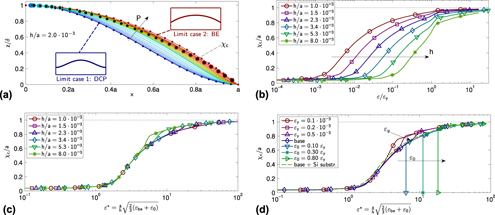Crossref Citations
This article has been cited by the following publications. This list is generated based on data provided by
Crossref.
Neggers, Jan
Hoefnagels, Johan
Hild, François
Roux, Stéphane
and
Geers, Marc
2013.
MEMS and Nanotechnology, Volume 6.
p.
135.
Li, Yan
and
Zeng, Changchun
2013.
Low‐Temperature CO2‐Assisted Assembly of Cyclic Olefin Copolymer Ferroelectrets of High Piezoelectricity and Thermal Stability.
Macromolecular Chemistry and Physics,
Vol. 214,
Issue. 23,
p.
2733.
YANG, Lin
LONG, Shi-guo
MA, Zeng-sheng
and
WANG, Zi-han
2014.
Accuracy analysis of plane-strain bulge test for determining mechanical properties of thin films.
Transactions of Nonferrous Metals Society of China,
Vol. 24,
Issue. 10,
p.
3265.
Neggers, J.
Hoefnagels, J. P. M.
Hild, F.
Roux, S.
and
Geers, M. G. D.
2014.
Direct Stress-Strain Measurements from Bulged Membranes Using Topography Image Correlation.
Experimental Mechanics,
Vol. 54,
Issue. 5,
p.
717.
Hoefnagels, J. P. M.
Neggers, J.
Blaysat, Benoît
Hild, François
and
Geers, M. G. D.
2015.
Advancement of Optical Methods in Experimental Mechanics, Volume 3.
p.
257.
McKenna, Gregory
and
Zhai, Meiyu
2016.
Polymer Glasses.
p.
205.
Zamani, Zahra
Shishvan, Siamak Soleymani
and
Assempour, Ahmad
2016.
Stress gradient interpretation of boundary layers in passivated thin films.
International Journal of Non-Linear Mechanics,
Vol. 81,
Issue. ,
p.
139.
Shafqat, Salman
van der Sluis, Olaf
Geers, Marc
and
Hoefnagels, Johan
2018.
A bulge test based methodology for characterizing ultra-thin buckled membranes.
Thin Solid Films,
Vol. 660,
Issue. ,
p.
88.
Anand, Vishal
Muchandimath, Sanjan C.
and
Christov, Ivan C.
2020.
Hydrodynamic Bulge Testing: Materials Characterization Without Measuring Deformation.
Journal of Applied Mechanics,
Vol. 87,
Issue. 5,
Tinoco, Hector A.
Hutař, Pavel
Kruml, Tomáš
and
Holzer, Jakub
2021.
Modeling of elastoplastic behavior of freestanding square thin films under bulge testing.
Acta Mechanica,
Vol. 232,
Issue. 7,
p.
2715.
Becker, Dennis
Littwin, Moritz
Bittner, Achim
and
Dehé, Alfons
2024.
Acoustic Transmission Measurements for Extracting the Mechanical Properties of Complex 3D MEMS Transducers.
Micromachines,
Vol. 15,
Issue. 9,
p.
1070.
Rufer, Libor
Shubham, Shubham
Wang, Haoran
Miller, Tom
Honzík, Petr
and
Ferrari, Vittorio
2025.
Editorial for the Special Issue on Micromachined Acoustic Transducers for Audio-Frequency Range.
Micromachines,
Vol. 16,
Issue. 1,
p.
67.
